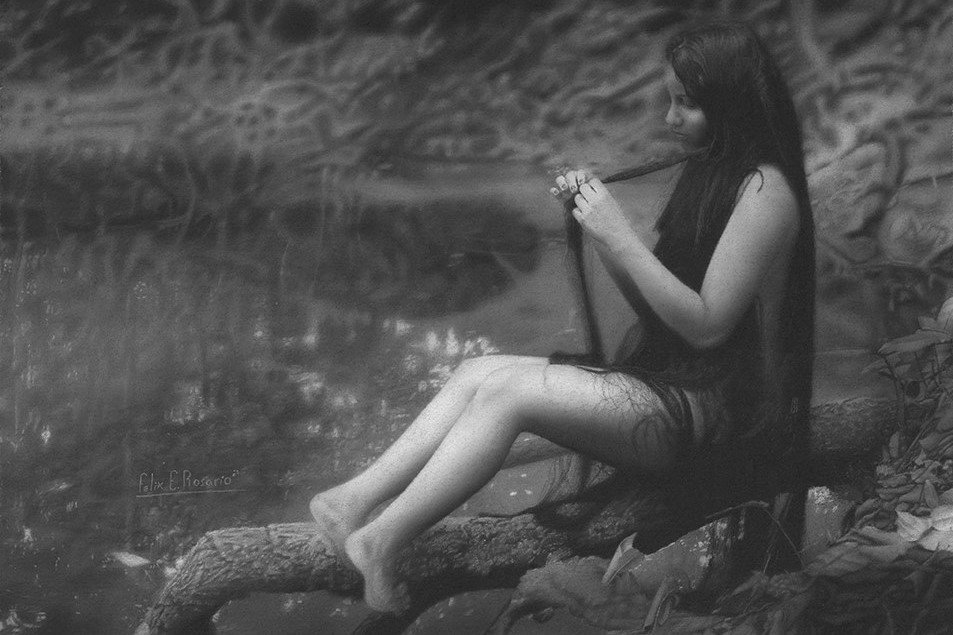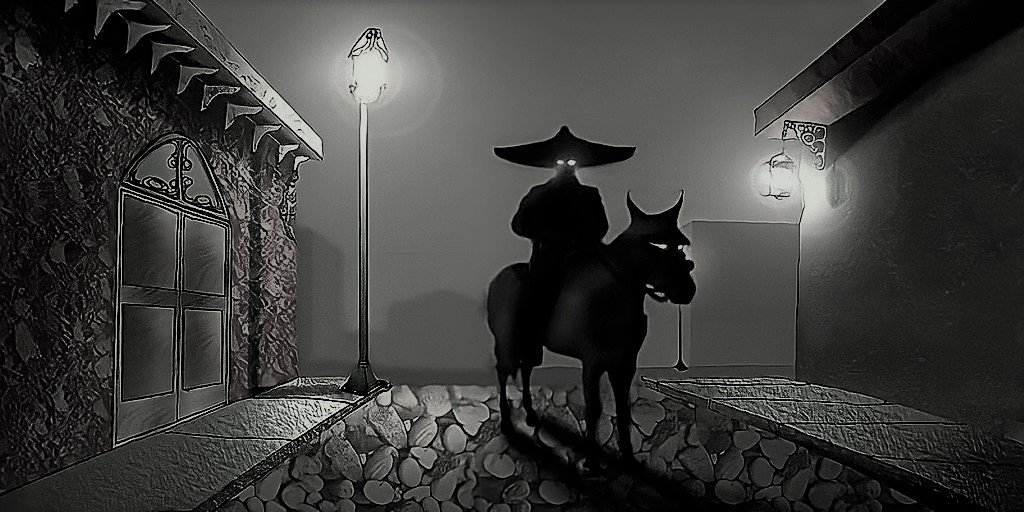Was Lavinia Fisher America’s First Female Serial Killer?
In 1886 an unexpected and deadly earthquake took Charleston, South Carolina by surprise. There had been no prior warnings or indications of tremors and the area, at the time, was not known to have any earthquakes so when the ground shook beneath the fifty thousand residents of Charleston many were caught off guard.
The devastation left 60 dead and caused millions of dollars in damage to the buildings in the city including the Charleston County Jail. If you believe the legends, the damage at the jail let loose the spirit of one of the most infamous residents in Charleston’s history, Lavinia Fisher.
Often touted as, not just Charleston’s but, America’s first female serial killer, her spirit was now free to wander the neighborhood around the jail looking for more victims but was Lavinia Fisher truly America’s first female serial killer, or was her story twisted and transformed decades after her death?
Old Charleston Jail
PART 1 - The Legend of Lavinia Fisher
The Six Mile Wayfarer House
From her birth in 1793 until 1819 not much is known of Lavinia’s life. In between those years, she married a man named John Fisher and together they ran a hotel six miles outside of the city of Charleston in South Carolina, appropriately the hotel was called the Six Mile Wayfarer House.
Despite being six miles away from town the couple were well-known and popular among the residents of Charleston which helped bring in travelers to the hotel by referrals. Lavinia was said to be beautiful, charming, and sociable, often, along with John, would join travelers for dinner at the hotel, entertaining them as the night came to a close.
It was possibly due to their popularity that when reports of missing travelers started to spread no one suspected John and Lavinia Fisher to be the ones behind it, at least not at first.
Missing Travelers
In February of 1819 with more reports of missing and possibly dead travelers, several residents of Charleston figured out that many of the missing were last seen entering the Six Mile Wayfarer House.
A mob formed and traveled to the hotel confronting the Fishers but finding no evidence of wrongdoing they decided to head back to the city leaving behind one man, David Ross, to watch over the hotel just in case.
The following morning while watching the hotel David was attacked by a group of men who severely beat him. Through his bloody eyes, he saw Lavinia Fisher approach him and reached out to her for help. Unfortunately for David, Lavinia was not there to offer assistance.
She grabbed David, choked him, and finally put his head through a window. Still alive, David was somehow able to escape the group and rush back to Charleston where he reported the attack. The authorities at Charleston were not easily swayed into believing his story, the Fishers, to them, were upstanding popular business owners and would not throw it all away to attack a watchman.
Two days later they would be proven wrong.
John Peoples
The day after David’s attack, a man named John Peoples, traveling from Georgia, stopped at the Six Mile Wayfarer House hoping for a warm meal and a place to rest. Lavinia gracefully welcomed him into the hotel offering a warm meal but to his dismay, she didn’t have any rooms available.
As usual, the Fishers joined their guest for dinner asking him all sorts of questions eventually becoming more and more personal. After some time Lavinia left to brew some tea and when she returned she told John Peoples of the good news, a room had suddenly opened up. She then gave him a cup of tea and they continued to talk. Unbeknownst to her, Peoples disliked tea and poured it out while she wasn’t looking.
Believing he had finished, Lavinia brought him up to his room and bid him goodnight but by now Peoples had grown suspicious of the personal questions and the sudden open room. After she left, Peoples chose to spend the night sitting on a chair watching the door instead of laying on the bed.
Hours later he finally dozed off but jumped up terrified when he heard a loud bang in his room. Seeing the door was still closed he looked around, finding his bed had fallen through a trap door and into a pit. Realizing the entire thing was a trap, Peoples escaped through a window and rode his horse into Charleston to alert the police.
Under the Floorboards
Now with both accounts from those who escaped the Six Mile Wayfarer House, police made their way to the hotel and arrested the Fishers along with two of their accomplices. They then conducted a search that revealed the true horrors of the hotel.
According to their investigation, they put together the Fishers would invite travelers to the hotel, joining them for meals, making them feel safe and welcomed. At some point, Lavinia would prepare them a cup of tea but include a bit of the poisonous oleander plant. She would use enough to make the victim dizzy and confused and then show them to their rooms where they would immediately lay down for bed.
Later in the night, John Fisher would trigger a trap door under the bed dumping their victim into a hidden room in the basement where they would be robbed and beaten to death. The police found items belonging to dozens of missing travelers and then they found the bodies. Over a hundred bodies were found, many were just bones telling the authorities the Fishers had been murdering travelers for years.
The Fishers and their accomplices were charged with murder, placed in the four-story Charleston County Jail, and sentenced to hang. Lavinia Fisher, believing the governor wouldn’t hang a woman, appealed the decision but when she was denied, the Fishers made a plan to escape.
Escape
On September 13th, 1819 the Fishers, who were in the same cell, made a rope out of bed sheets and began their escape. John Fisher was the first to go down the rope, making it safely to the ground but the rope broke before Lavinia could attempt to join him. Though he wouldn’t go far, as the commotion they caused meant his capture was swift. The two were then placed under much tighter security to await their execution date on February 18th, 1820.
By the time that date rolled around, John Fisher had met with a minister multiple times and repented for his sins but Lavinia refused outright every time. At the gallows, a crowd of two thousand residents had congregated wanting to witness the monsters of Charleston hang for their crimes.
Execution
Lavinia requested to be hanged in her wedding dress but after changing into the dress refused to walk to the gallows. The crowd watched as John Fisher walked to his noose with the minister by his side and watched as Lavinia was dragged in her wedding dress kicking and screaming curses at the crowd.
John was executed swiftly but as the noose went around Lavinia’s neck she screamed out to the crowd, “If you have a message you want to send to hell, give it to me - I’ll carry it.”
Lavinia then jumped off the scaffolding with the noose around her neck and died staring out into the crowd. Those who watched her life slip away would later say she died with a wicked stare imprinted on her face. Lavinia Fisher was 27 years old.
The Ghost of Lavinia
Almost immediately after her death, many reported seeing glimpses of Lavinia staring outside from her cell at the Charleston County Jail trapped in the room where she had spent the last year of her life. The 1886 earthquake caused a collapse of the fourth floor of the County jail and afterward many reported this had released Lavinia’s spirit, allowing her to wander the streets.
Although many said her spirit was out looking for victims, this would imply the stories of her murderous tendencies were accurate but it turns out there’s not much truth in these tales.
PART 2 - The True Story of Lavinia Fisher
Lavinia was born in 1793, married John Fisher in the early 1800s, and operated the Six Mile Wayfarer House by 1819. It’s here that legend and true history’s paths start to diverge.
While there were reports of missing travelers in Charleston the number of those missing were no different than the reports many other cities and towns had across the country. Charleston instead was facing a rash of robberies, many were reporting a gang of thieves were robbing travelers leaving the city and even robbing the residents within the city limits.
The Mob
This caused anger from residents and together many formed a mob who followed reports of theft to a hotel five miles away from the city. There they forced the owners to evacuate so the hotel could be searched but when they refused, the mob burned the hotel down.
The mob then proceeded to the Six Mile Wayfarer House and, under the same threat of burning, forced the Fishers and anyone else inside to evacuate. Now empty, the mob left David Ross there to search for any missing items and ensure no one returned.
Outlaws
It turns out the Six Mile Wayfarer house may not have been a hotel at all and instead a hideout for outlaws and a gang of thieves that included the Fishers. The gang then returned that evening and attacked David Ross kicking him out of the hideout, sending him back to town.
According to a Charleston Courier article from February 22, 1819, the morning after David Ross was attacked, the gang stopped and attacked John Peoples who was traveling toward Charleston. They beat him unmercifully and robbed him of any money he had on him.
Upon entering the city John Peoples went directly to the sheriff who had also just heard the account of David Ross’s attack, this caused the sheriff to gather a posse of armed men and head directly to the Six Mile Wayfarer house where they surrounded the house, demanding the Fishers surrender.
Arrested
Inside the Fishers and three others were well-armed, with as many as a dozen muskets, but they were outnumbered and had no other choice but to surrender. The Fishers and their accomplices were then arrested but not charged with murder since the investigation found no bodies in the house, there were no trap doors or poisoned tea but the police did find items belonging to several who said they had been robbed. Satisfied with their search the Sheriff burned down the Six Mile Wayfarer House.
The Fishers were charged with assault with the intent to murder but this was then changed to highway robbery which at the time was a capital offense meaning the punishment was hanging. The Fishers did appeal their conviction and like the legend, it was rejected. And like the legend, they did try to escape but after the rope broke John Fisher did not want to leave Lavinia behind and re-entered the jail on his own accord.
The First in the State
The two then wrote the governor many letters asking for a stay of execution, other members of the community did the same, and by the time February of 1820 rolled around the two were local celebrities. Many residents felt the punishment of hanging was far too harsh and especially in Lavinia’s case as no woman had ever been sentenced to hang in the state.
At first, the letters appeared to work with the governor delaying the execution for two weeks. Lavinia believed this meant the governor was considering a pardon or at the very least taking execution off the table but on the morning of February 18th, a carriage arrived at the County jail to take the Fishers to the gallows.
Unlike the legend, Lavinia did not request to be hanged in her wedding dress and entered the carriage with John peacefully. Though once they arrived at the gallows Lavinia did have to be dragged up the scaffolding as she yelled to the crowd that she was innocent. Once it was clear she would not be getting a pardon she cursed the governor.
She also didn’t jump off the scaffolding although her last words were the same they came from anger at the governor as opposed to the callous evil the legend portrays it as.
So if the true story of Lavinia Fisher is tamer and includes no murderous hotel why are there countless variations to Lavinia’s story calling her America’s first female serial killer?
PART 3 - The Ghost of Charleston County Jail
“Falsehood flies, and the Truth comes limping after it”
Jonathan Swift
Speculation
There’s a lot of speculation about what caused the story of Lavinia Fisher to transform into one of murder but in reality, it appears the stories simply evolved over time due to the circumstances. Lavinia Fisher was the first woman hanged in Charleston during a time when it was extremely rare for a woman to be hanged in the country if it wasn’t for murder.
With it being a popular case it’s not surprising either that many played a game of telephone with the facts, changing the details as the years went on. It’s not hard to see why someone not familiar with the actual details of the case would assume Lavinia must have also been a murderer. On top of that with the Six Mile Wayfarer house being burned down, there were very few ways of disproving claims of trap doors and buried bodies.
Ghost Sightings
Then the ghost sightings started. The reports of Lavinia Fisher’s ghost prior to 1886 staring out from the county jail are difficult to verify and were possibly created after 1886 to help give more credence to post-1886 sightings.
It’s also important to note the late 1800s was the peak of spiritualism in the United States, belief in ghosts and spirits were high and many believed it was entirely possible the ghost of a fearsome quote, unquote serial killer would wander the streets.
People began reporting seeing Lavinia Fisher’s ghost wandering the Charleston County Jail, today known as the Old City Jail, in her wedding dress because the legend at this point had been twisted to include that she was hanged in it yet we know she wasn’t. Others have reported seeing her wandering the Unitarian Cemetery where the stories say she was buried. In reality, Lavinia would have been buried in a potter's field near the jail after she was hanged, she would have had no reason to wander the Unitarian Cemetery.
The ghost sightings and tales of her being a murderer created a feedback loop where many would report the sightings adding their own twist to the story of the supposed murders. These stories were eventually reported in newspapers and magazines as facts which then created more ghost sightings with more twists.
Centuries Later
By 1922, a hundred years after Lavinia was hanged, there were already magazines and newspapers like The Yorkville Enquirer calling Lavinia a murderer. At first, the stories reported upwards of twenty bodies found buried in the Six Mile Wayfarer House. Today, after another hundred years, many giving ghost tours of the area report the number of bodies to be around a hundred yet there were never any bodies buried under the home.
It wasn’t until recently that researchers started to take a close look at the legend and started debunking the more fantastical elements of the story. In 2010 author Bruce Orr wrote the book “Six Miles to Charleston: The True Story of John and Lavinia Fisher” where using actual newspaper articles and other documents from the 1800s was able to disprove many of the made-up details of Lavinia Fisher’s story.
Today you’ll still hear the story of America’s first serial killer who poisoned wandering travelers and led them to their deaths being reported as fact. Who knows how long it will take before the myths and legends are replaced by the true story?
Lavinia Fisher wasn’t a model citizen and was actually part of a violent gang that robbed travelers leaving Charleston but she wasn’t a murderer and she certainly wasn’t America’s first female serial killer.
Learn a Little Bit of Everything!
Myths, Mysteries, & Monsters












